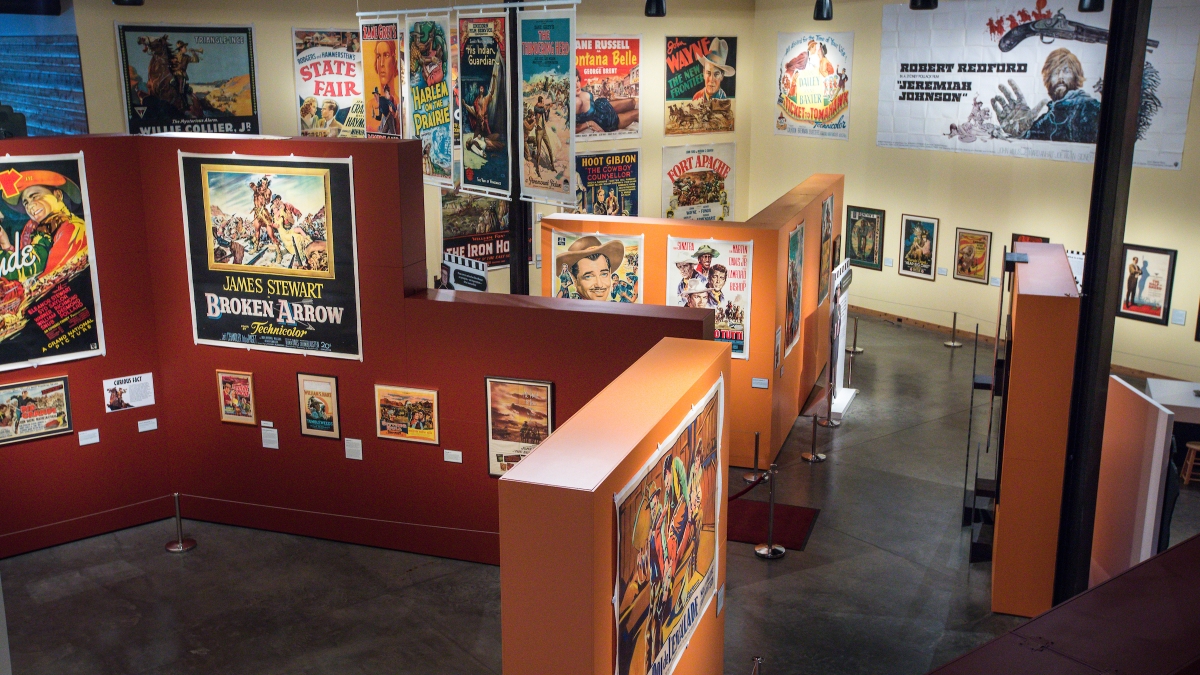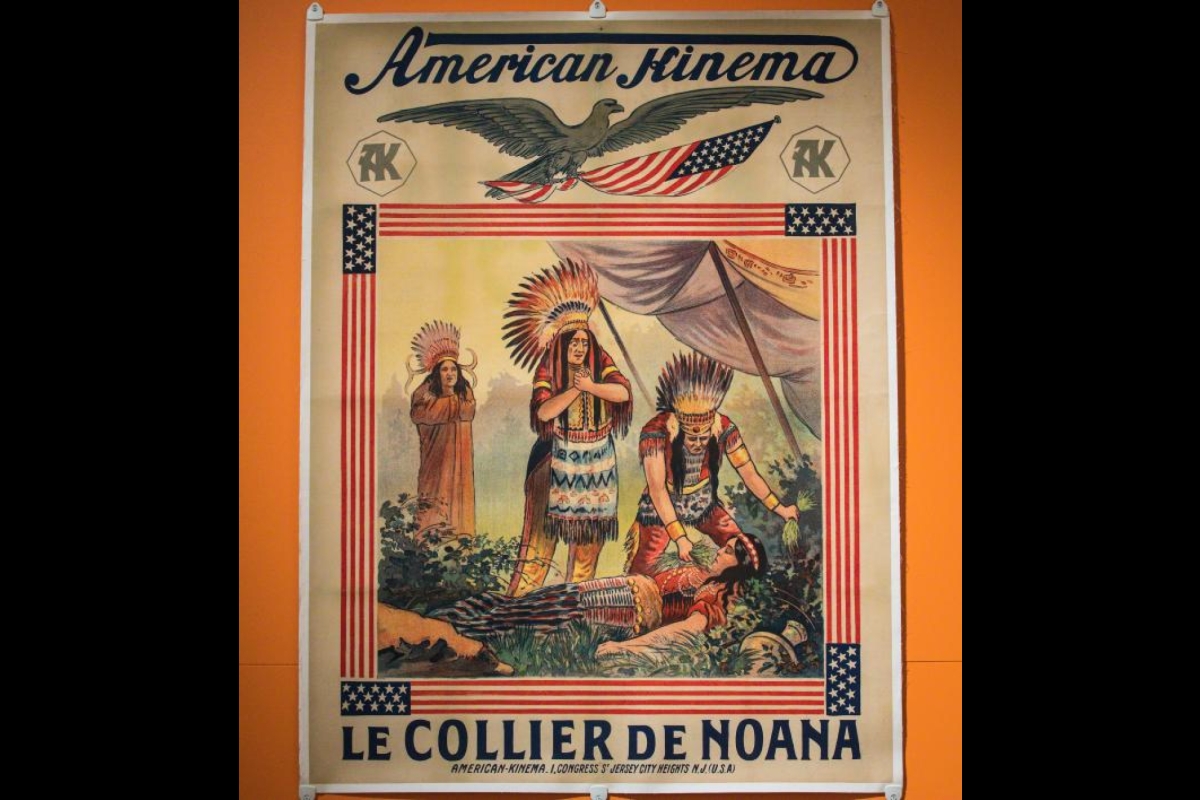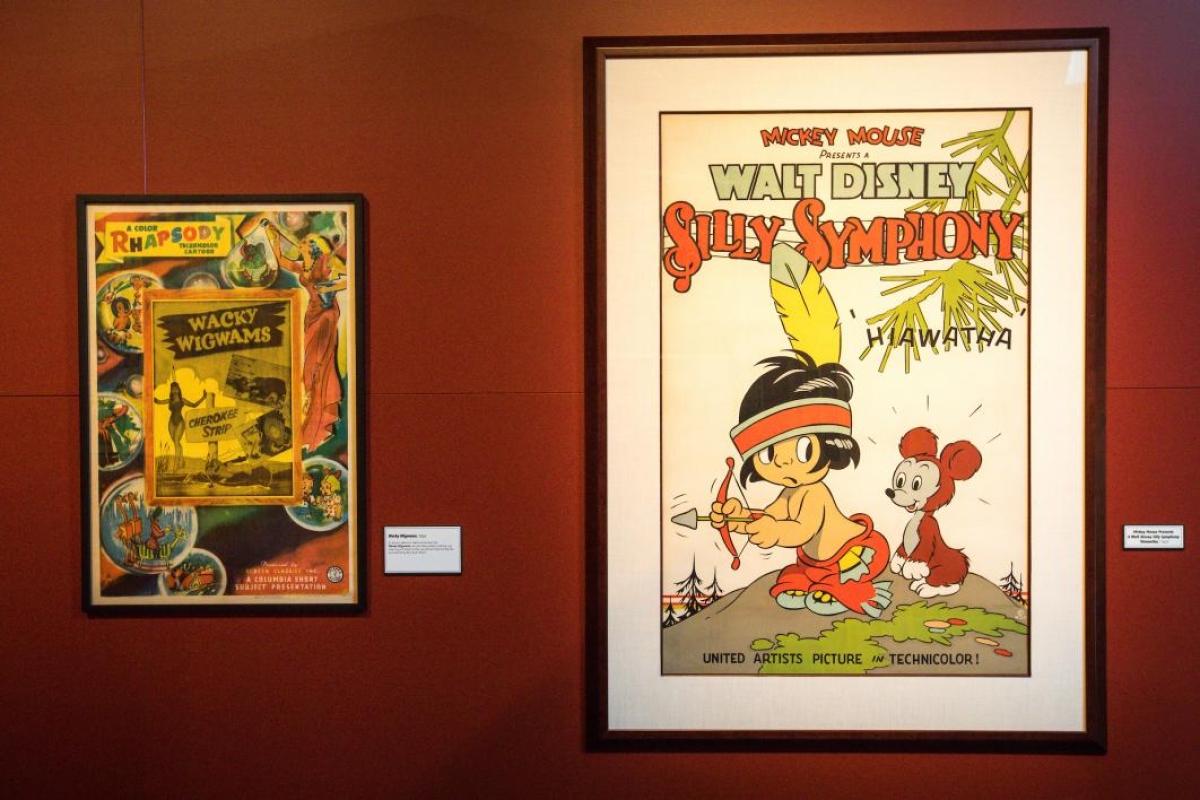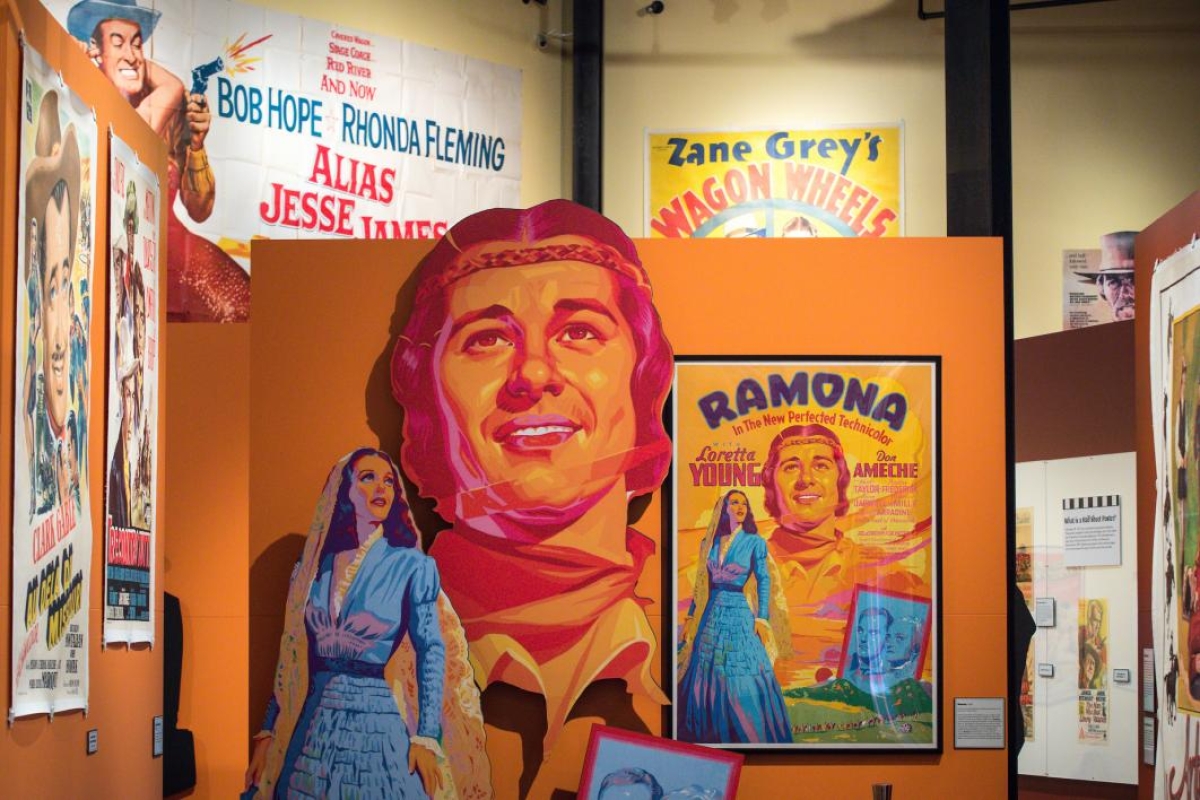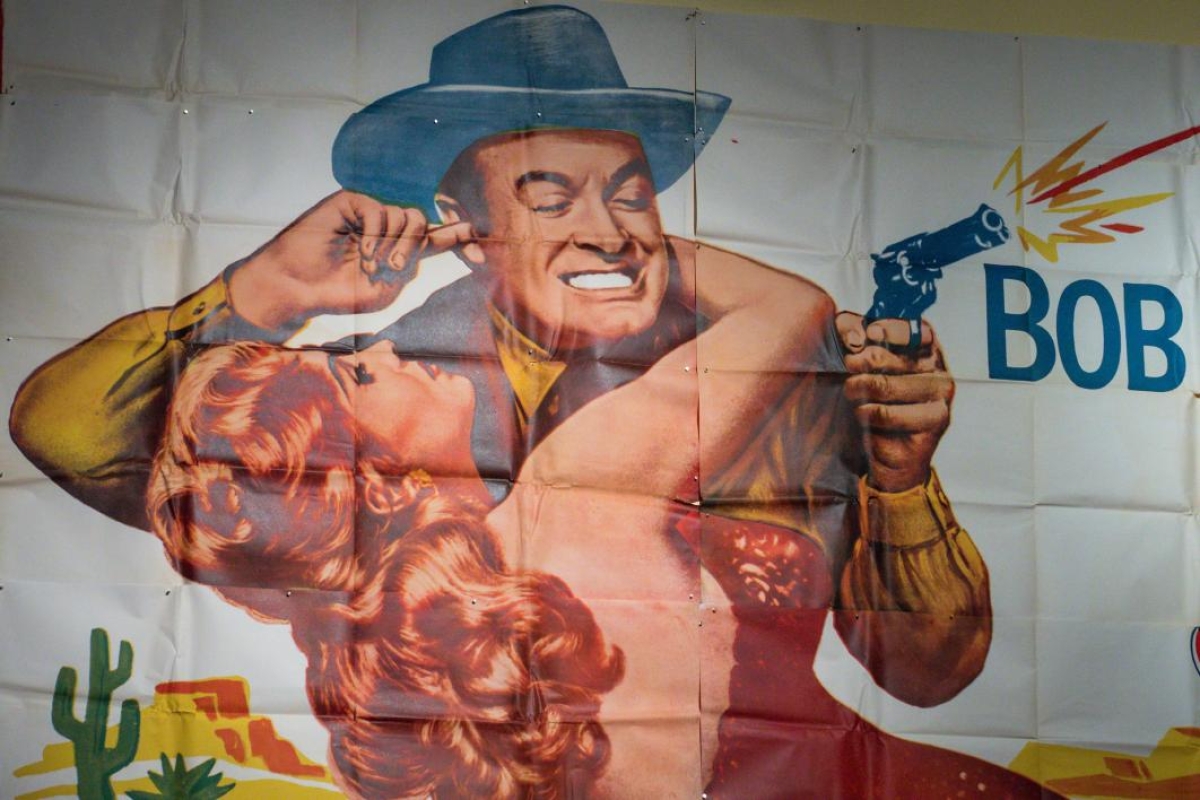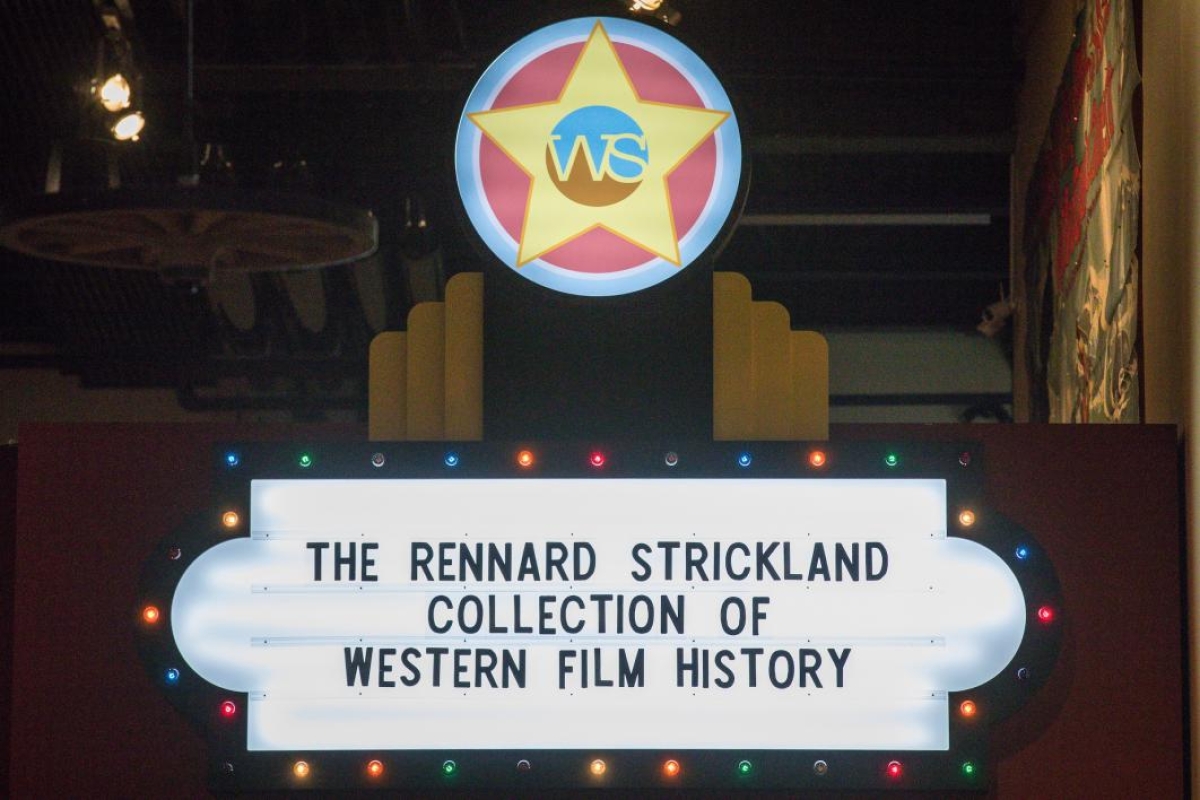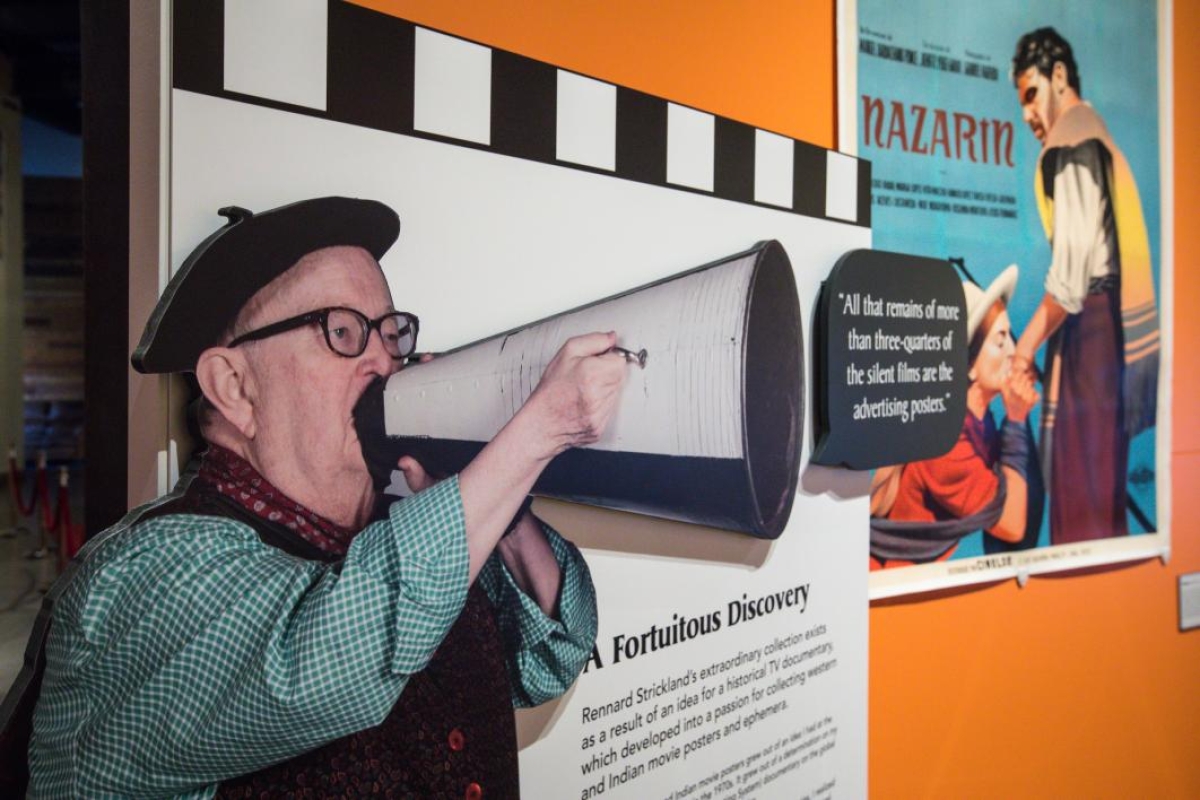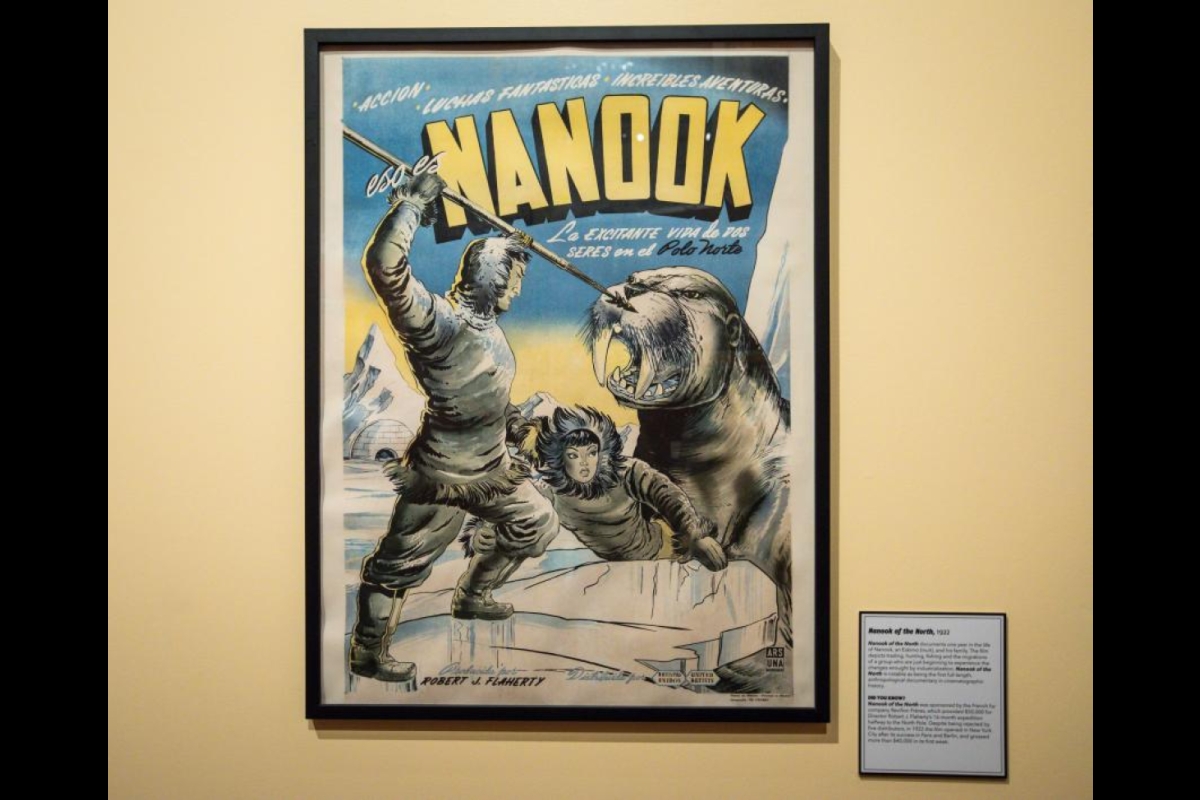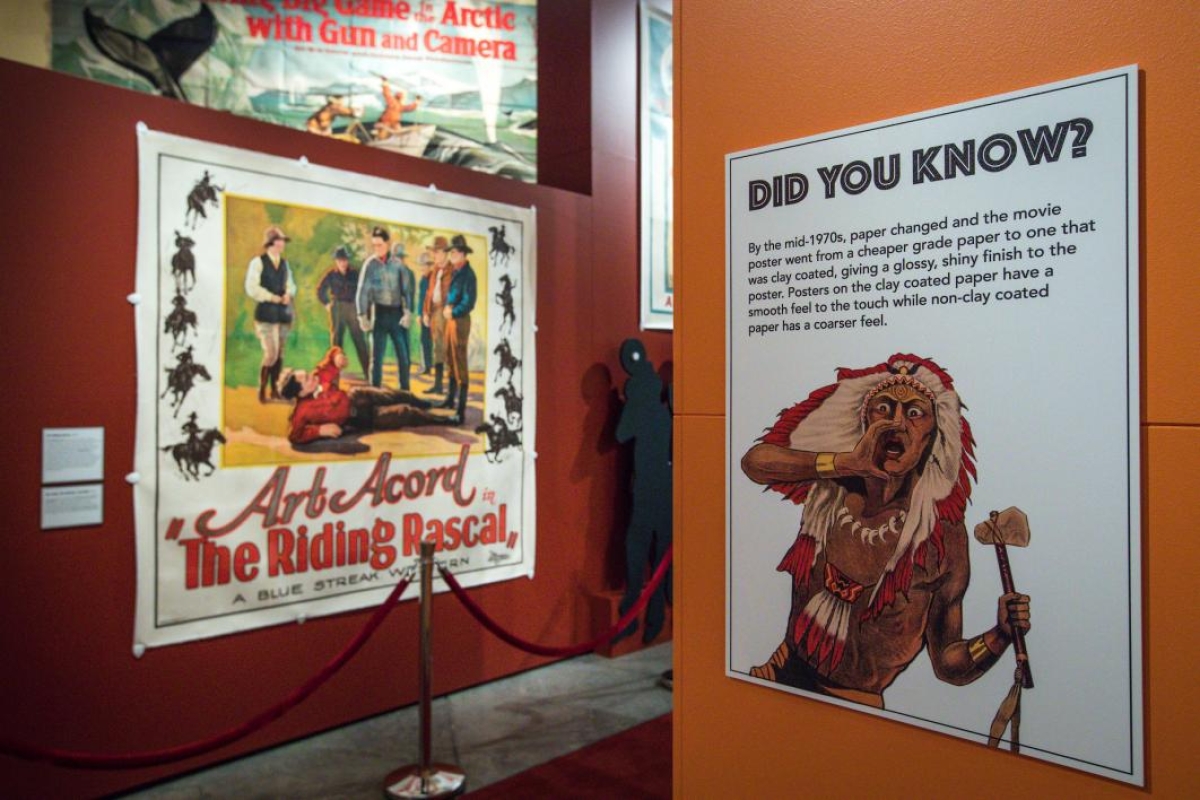One of the largest collections of Western film memorabilia has found a home, appropriately, in the Southwest.
The Rennard Strickland Collection of Western Film History debuts tomorrow at Scottsdale's Museum of the West. The collection was acquired jointly last October by the museum and Arizona State University's Foundation for A New American University. More than 100 posters and lobby cards will be on display, out of the more than 5,000 in the collection, dating from the 1890s to the mid-1980s. The exhibit runs through Sept. 30, 2018.
“The collection, which numbers more than 5,000 works, represents Dr. Strickland’s passion for Western film and the extraordinary graphic abilities of artists from past to present,” chief curator Tricia Loscher said. "It's unique in that many stories about the posters and films are told from Dr. Strickland's perspective."
Strickland, a professor at University of Oklahoma's College of Law, began to collect the memorabilia in the 1970s. He then passed the collection along to the Museum of the West and ASU to serve as a resource for the university's faculty and students. Strickland himself is of Osage and Cherokee heritage and an expert on Indian law.
Because many of the films were shot in the area, the move made plenty of sense.
Test your Western film trivia below.
"We have brought his collection home," Loscher said. "This is one of the major centers of the Western region where film has been produced, and it is an honor and privilege for us that Dr. Strickland selected this partnership to see that his collection is shared by present and future generations from around the world."
To celebrate the acquisition, an event will be held for museum members from 5 to 7 p.m. Tuesday, Sept. 26. Attendees will have the opportunity to view the exhibition and meet Strickland, Loscher, ASU President Michael Crow, museum director Mike Fox and others.
Museum hours are 9:30 to 5 p.m., Tuesday through Saturday and 11 a.m. to 5 p.m., Sunday. Closed Monday. (Thursday hours are extended to 9 p.m. Nov. through April.)
Admisison prices for the museum are: $13, adults; $11, seniors (65+) and active military; $8, students (full-time with ID) and children (6–17 years); free for members and children 5 and under.
For more information visit scottsdalemuseumwest.org.
Top photo: The Rennard Strickland Collection of Western Film History is on display at Western Spirit: Scottsdale's Museum of the West from June 20, 2017 to Sept. 30, 2018. Photo by Charlie Leight/ASU Now
Did you know?
Only two Western films have ever received a “Best Picture” Academy Award (Oscar).
“Cimarron,” released in 1931; received the “Best Picture” Oscar in the same year.
An adaptation of Edna Ferber’s novel, it tells the story of a young woman who marries a drifter-gunfighter during the Oklahoma land rush, who go their separate ways. It starred Richard Dix and Irene Dunne.
“Dances with Wolves,” released in 1990, the film received the “Best Picture” Oscar in 1991.
A historical drama set during the U.S. Civil War, it tells the story of Union Army Officer Lieutenant John J. Dunbar and his relationship with a band of Sioux Indians. The film stars Kevin Costner.
Although hundreds of thousands of movie posters rolled off the presses, relatively few have survived.
Posters were shipped from theater to theater, and became worn, ragged and outdated. Paper drives during World War II emptied film-studio storage warehouses, making silent film posters particularly rare.
An 1889 Budweiser saloon poster of a painting entitled “Custer’s Last Fight” was the basis for movie poster art.
“Stagecoach” is considered one of the most important Western films ever made and one of Director John Ford’s greatest achievements.
It demonstrated to the Hollywood studios that there was a viable audience for Westerns films. It also rescued John Wayne from his B-picture status, propelling him to fame.
The historic drama, based on a short story by Ernest Haycox, is about a group of passengers traveling by stagecoach to the town of Lordsburg in the New Mexico Territory. Shot on location in northeastern Arizona’s Monument Valley, John Wayne plays Ringo Kid, an ex-con and the only one among the group who possesses the survival skills to keep them alive.
The earliest Westerns were filmed in New Jersey.
They derived from the Wild West shows that were touring the country in the late 1800s. California’s long days of sunshine and variety of outdoor settings quickly lured film companies to the West.
Silver-screen singing cowboy Tex Ritter was the father of actor Jon Ritter — known by millions for his role as bachelor Jack Tripper in the television series “Three’s Company.”
Tex Ritter appeared in numerous Western films, primarily in the mid-1930s and 1940s, and went on to achieve even greater fame as a Western recording artist.
Trivia courtesy of Scottsdale's Museum of the West.
More Arts, humanities and education

‘It all started at ASU’: Football player, theater alum makes the big screen
For filmmaker Ben Fritz, everything is about connection, relationships and overcoming expectations. “It’s about seeing people beyond how they see themselves,” he said. “When you create a space…

Lost languages mean lost cultures
By Alyssa Arns and Kristen LaRue-SandlerWhat if your language disappeared?Over the span of human existence, civilizations have come and gone. For many, the absence of written records means we know…

ASU graduate education programs are again ranked among best
Arizona State University’s Mary Lou Fulton College for Teaching and Learning Innovation continues to be one of the best graduate colleges of education in the United States, according to the…


